UTSURI = shadow of hamon
Utsuri is one of the appearances that come from hardening work. Good utsuri
is a proof of sensitive steel.
When you look at hamon taking the blade toward good lighting,
misty white shadow appears above the hamon. The view
is very interesting.
There are many kinds of utsuri patterns. But the pattern is not so important
for blade quality, particles and colour is more important. Good hardened
steel has dense particles and deep colour on the area between hamon and
utsuri. (=> JINIE)
Some examples of the pattern of utsuri.

Sensitive steel has several phases of hardening effect.
On the blade, most effected part is hardened area, in
the hamon.
Next effected part is tough and dense. The border between the hardened
area and the tough part is hamon line (=> Hamon).
Next to the tough part is mild part. The border between the tough part
and the mild part is shadow of hamon (utsuri).
Every border looks white, because it is mixed with two
different crystals of the phases.
Utsuri is a natural appearance by the relation between sensitive steel
and proper tempering. A good hardened hamon is followed with the shadow.
Sensitive steel makes clear borders, insensitive steel can not make clear
border, sometimes only hamon.
Watching the combination of hamon and its shadows (utsuri) is very fantastic.
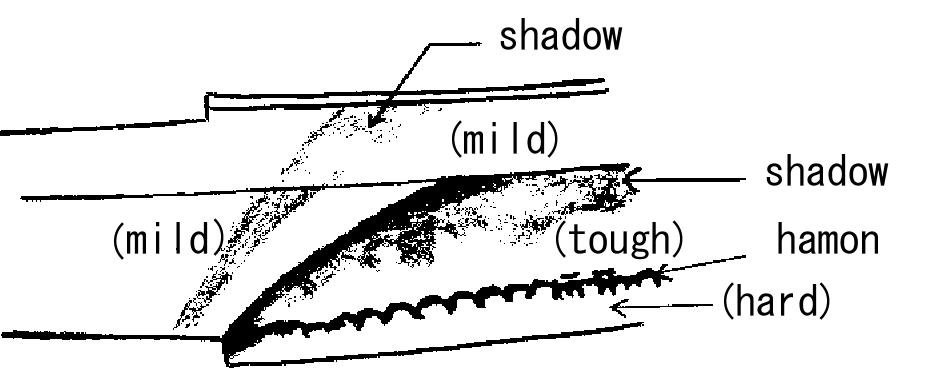
A starting of UTSURI on tachi blade.
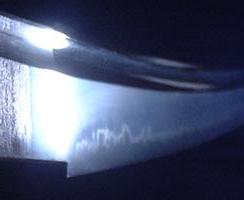
An utsuri on a Hira-zukuri blade.
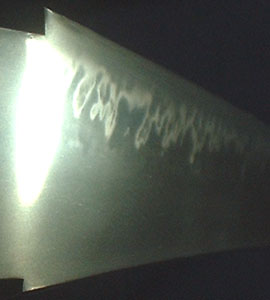
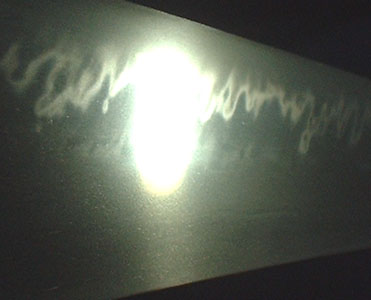
It appears as an irregular pattern relating with the choji pattern hamon.
The pattern of the hamon and utsuri is fantastic, but the point of this
appearance is the fine colour in the area between the hamon and the utsuri.
It means sensitive steel and proper hardening work.
Before 17th century, most of blades had some kind of utsuri, but after
17th century many blades became to have aesthetic hamon, and clear utsuri
became rare.
-Terms about Utsuri-
(There are many terms what indicate each kind of utsuri. We introduce some
of them we use often.)
Midare-utsuri = an irregular patterned utsuri.
An example of midare-utsuri pattern that we can see often
in Osafune school.
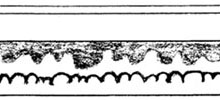
Jifu-utsuri = a kind of midare-utsuri that the shape is clearly distinguished.
It can appear in blades in Heian to the early Kamakura period, and Un-rui
schools. The outline of this utsuri is not a layer pattern. Do not confuse
with Namazu-hada.
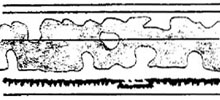
Kage-choji = a kind of midare-utsuri that a choji patterned utsuri on choji
patterned hamon.
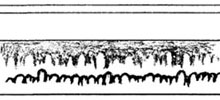
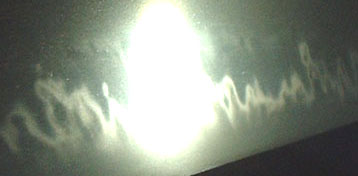
Bo-utsuri = a straight patterned utsuri like a narrow belt.
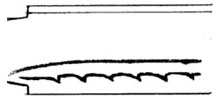
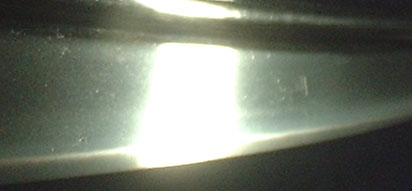
Suji-utsuri = seen as line along suguha hamon. Sometimes appears as parallel
double or triple lines. It is not a layer pattern. It is just a hardening
effect, so it is free from the layer pattern.
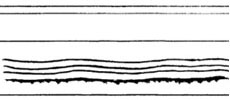
Dan-utsuri = combination of suji-utsuri and midare-utsuri. Aoe school is
famous for it.
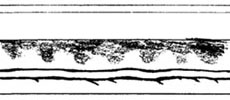

Nie-utsuri = the particles of utsuri is a little larger than normal utsuri.
It appears like a cloud. Rai school.
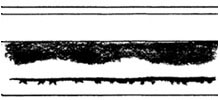
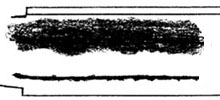
Shirake-utsuri = like a thin cloud. It is a little hard to distinguish
the shape. Common in blades in Muromachi period.
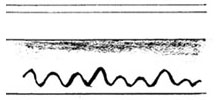
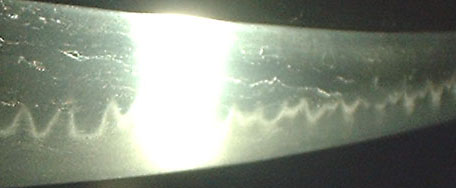
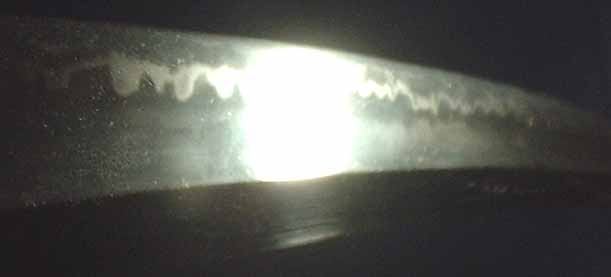
Tsukare-utsuri = some books say that an utsuri appears on tired blades.
I don't know if it could be. Confusion of mild inner steel?
Mizukage = a short utsuri what goes through the back.
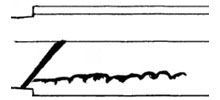
-For beginners-
Good blade shows several phases of hardening effect on its steel. In sensitive
steel, appearance of utsuri is not simple. Sometimes, you can find several
kinds of utsuri in one blade. For example, mizukage and midare-utsuri,
or jifu-utsuri and large midare-utsuri, or others.
Utsuri can be seen with the same way to study hamon. (=> HAMON, =>How to
appreciate blade quality.)
When you change the angle of reflection a little, you may see the different
appearances. Please be familiar to find utsuri(s), and enjoy studying them.
MIZUKAGE
MIZUKAGE is a kind of utsuri.
When utsuri starts 45 degrees and goes through the back
of the blade, it is specially called "MIZUKAGE".
Such appearance is common on blades before 17th century.
MIZUKAGE on kogatana and on tachi blade.
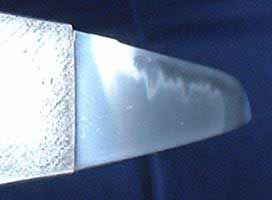
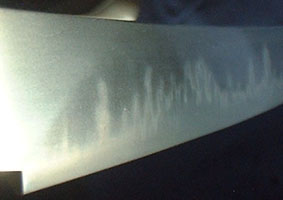
Some books say that mizukage is a proof of re-hardening. But it is not
true. Such information has been confusing beginners.
Mizukage means just a starting of hardening effect. It comes from the hardening
work. It is very natural for original length blades.
(Please see => re-hardening , you will understand why they misunderstood the relation between mizukage
and re-hardening.)
(=> Episodes by Kokaji, Mizukage)
Do not confuse starting of hardening effect to starting of hamon. Sometimes
hamon is controlled by the clay work.
On most of blades before 17th century, starting of hamon is same to starting
of hardening effect. It suggests the tang was not heated during the heating
work for quenching. In other words the tang is not hardened by the hardening
work.
But after 17th century, it became common that hamon design is controlled
by smith's skill of clay work. Starting of hamon also made by the clay
work. Probably mizukage should be in the tang.
Home > Terms > Utsuri




















